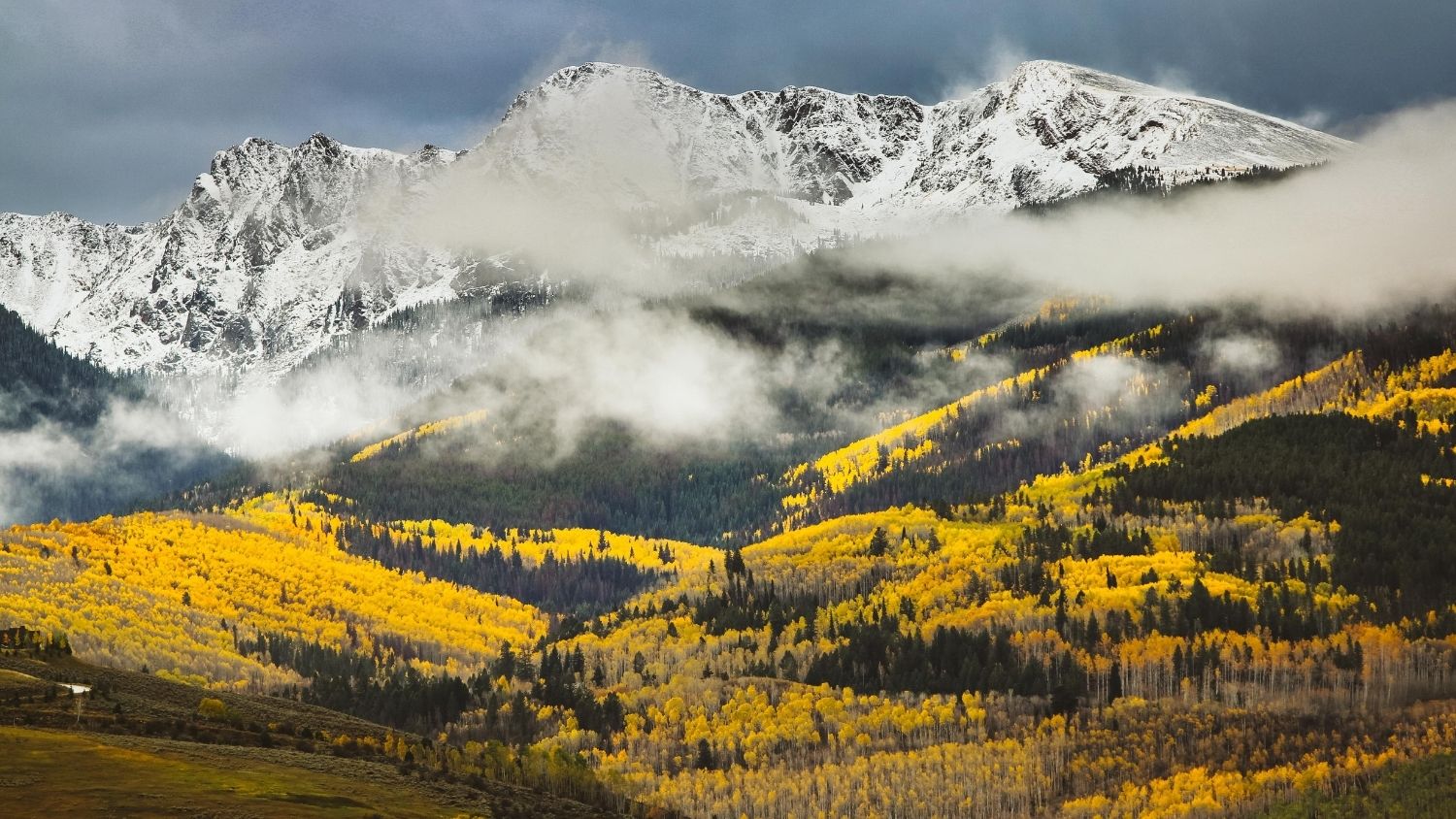Along three scenic drives through Colorado’s Rocky Mountains in fall, tourists will see less of a brilliant golden tree in the next 100 years, researchers from North Carolina State University projected in a new study.
Using computer modeling, researchers simulated how the distribution of quaking aspen, or Populus tremuloides, a native tree known for its brilliant yellow and orange foliage in fall and the sound of its trembling leaves, will change amid rising temperatures over the next 100 years.
They predicted quaking aspens will decline in visibility in 2120 under climate warming scenarios. Visibility will also decline along three scenic national byways in the Colorado Rockies – even if climate conditions remain at historical levels. They saw the greatest declines in the visible landscape areas.
“Aspen are sensitive to drought and warming temperatures, and empirically we are already starting to see declines,” said the study’s senior author Jelena Vukomanovic, assistant professor in the NC State Department of Parks, Recreation and Tourism Management. “Even if we keep current conditions, we will see declines in aspen. But under worsening climate change, the decline in aspen will be worse.”
In the study, researchers modeled the distribution of quaking aspen trees visible under three scenarios: If climate does not change from historical conditions observed from 1980 to 2010; under a 4-degree temperature increase with 15 percent less precipitation; and with a 4-degree decline and 15 percent more precipitation.
For each scenario, their simulation modeled whether aspens were visible from 32,949 different vantage points along three scenic roadways in Colorado: Cache la Poudre, Trail Ridge Road and Peak-to-Peak Highway. They used a computer model of forest dynamics called the Landscape Disturbance and Succession (LANDIS-II) model to forecast where aspen will grow, and used U.S. Geological Survey elevation data to model visibility along scenic roads.
In addition to factoring in changes in temperature and precipitation, they also modeled how wildfires, insects and wind events would impact aspen tree growth and distribution. These trees are intolerant of drought and shade, researchers said, but they are often the first to colonize a burned area.
Overall, they found that aspen are expected to decline in all three climate scenarios. In the two warmer scenarios, the losses were more than two times greater overall, and aspen loss was even greater in the visible areas from the scenic byways.
“We can say with good confidence that these main arteries of movement through the mountains will see a noticeable decline in visible aspen, and the loss of visible aspen is greater than the overall loss,” said Vukomanovic. “It’s hard to predict what people will do – build new roads, new outlooks, or create new opportunities to view the remaining stands – but there could be a negative impact to some of the communities along these routes that rely on tourism dollars from aspen viewing.”
They saw that the changes in aspen varied depending on the elevation. Aspen at the lowest elevations, where they are the least abundant, saw increases under all three scenarios, but the increases were smaller with climate change. Researchers hypothesized that at these elevations, the model was capturing aspen regeneration after wildfire, but they regenerate to a lesser degree under the more extreme climate change scenarios.
“We think they are increasing at lower elevations because they’re colonizing recently burned places,” Vukomanovic said. “Because there’s been such active fire suppression at the lower elevations where people live, when fire comes, it creates opportunities for the aspen to colonize new places. But these gains are tiny compared to losses at higher elevations.”
At the middle elevations of 2,000 to 3,000 meters, where aspen are most abundant, they saw consistent decreases across all three scenarios. At the highest elevations above 3,000 meters, they saw lower declines under the climate warming scenarios. They believe this means aspen distributions will shift to higher elevations as the climate warms.
“As drought and higher temperatures at lower elevations start to increase the vulnerability of aspens to pathogens like bugs, fungi and bacteria, their suitable climate will shift upwards,” said Nikki C. Inglis, a research assistant and graduate student in the Center for Geospatial Analytics at NC State and first author of the study.
Researchers said their study is important because it is evidence for how climate change will be visible to people. In addition, the aspen trees in particular are an important feature of the Colorado landscape.
“They are part of how people who live in Colorado identify themselves, and what makes this a unique landscape,” Inglis said. “They draw people in from all over because the aspen trees create a sensory experience with sound and sight. And of course the color change is absolutely striking – there’s nothing like it.”
The paper, “Climate change disproportionately affects visual quality of cultural ecosystem services in a mountain region,” was published online in Ecosystem Services. The work did not receive any specific grant from funding agencies in the public, commercial or not-for-profit sectors.
-oleniacz-
Note to editors: The abstract follows.
“Climate change disproportionately affects visual quality of cultural ecosystem services in a mountain region.”
Authors: Nicole C. Inglis, Jelena Vukomanovic.
DOI: 10.1016/j.ecoser.2020.101190
Authors: Nicole C. Inglis and Jelena Vukomanovic.
Abstract: Expansive vistas in mountain systems make scenic viewscapes – the visible portions of a landscape with which people form a connection – essential providers of cultural ecosystem services (CES). Like the dynamic systems they encapsulate, mountain viewscapes are subject to change, but the CES they provide are rarely considered from future or dynamic perspectives. Here we forecasted change in CES, using climatic shifts of a culturally valuable tree species, quaking aspen (Populus tremuloides), along scenic byways as an example of how viewscapes change through time. We simulated future aspen distributions in the Colorado Rocky Mountains through 2120 under three climate change scenarios and computed change in aspen visibility in 32,949 viewscapes. Across each scenario, the total area of aspen and its visibility from byways declined, but visible declines were 1.5–3.1 fold greater than declines in the study area overall. Differences between visible and total aspen peaked in mid- elevations (2000–3000 m) where aspen is most abundant. In contrast, aspen is forecasted to increase and become disproportionately more visible from scenic byways at lower elevations. Mismatch between total and visible declines in aspen highlights opportunities for tighter connections between landscape planning and ecological research for more comprehensive understanding of future changes in CES.
- Categories:



